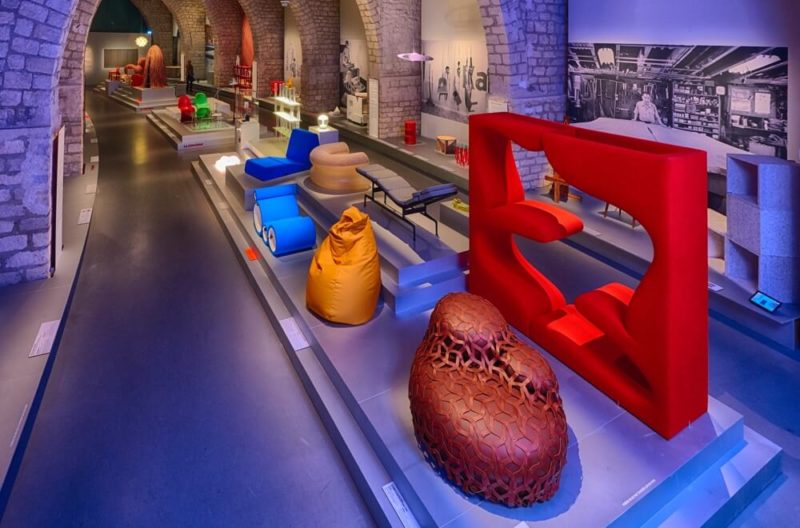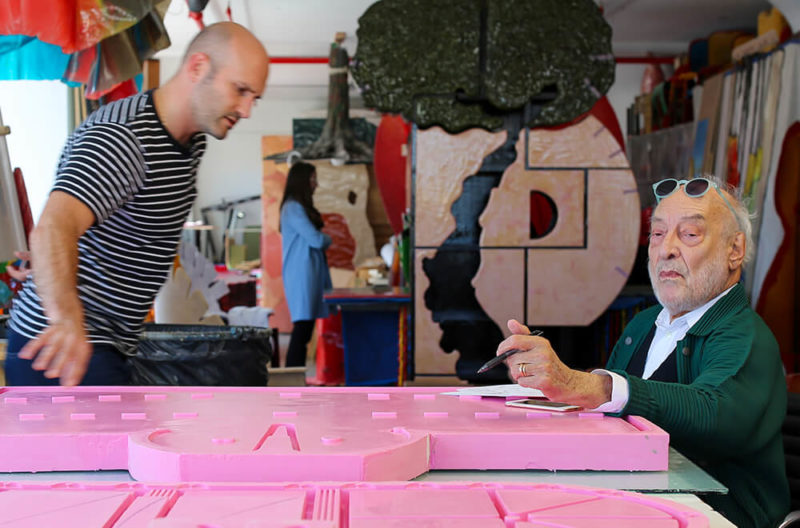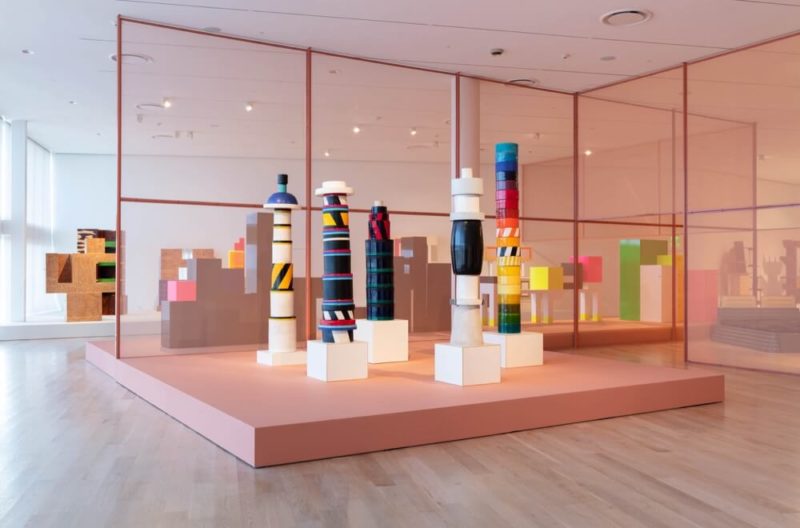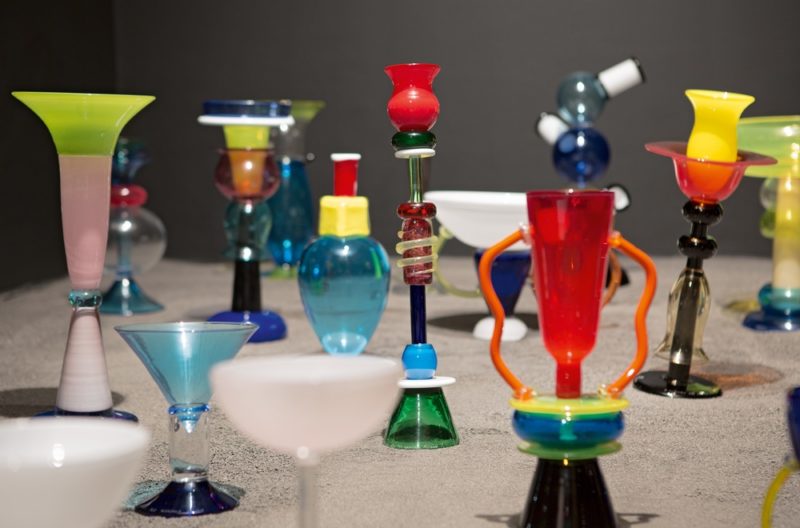Mondo Mendini – The World of Alessandro Mendini
Invited to curate an exhibition of the art that inspired him, in the building he designed, Mendini’s swansong is full of humour, colour and counterpoint.
Groninger Museum, Groningen, Netherlands
12th October 2019 – 5th May 2020
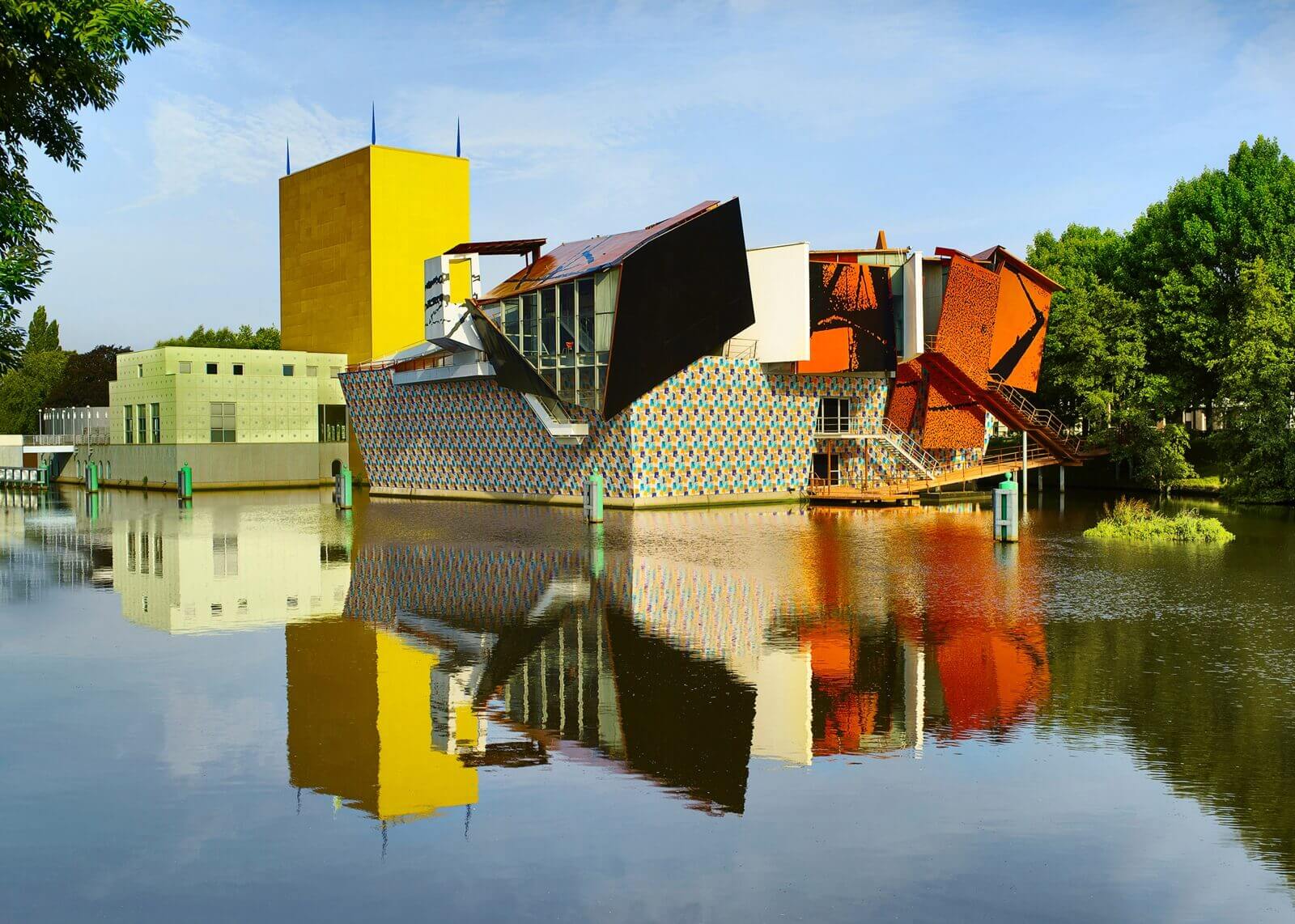
Groninger Museum, Groningen
COURTESY: Erik en Petra Hesmerg
TO MARK THE twenty-fifth anniversary of the Groninger Museum building designed by Alessandro Mendini, the museum is presenting an eclectic exhibition about the postmodern Italian designer, architect and magazine editor. From collectible design to kitchen goods for Alessi and Philips, it pinpoints how Mendini’s passion for snazzy colours and kitschy vibrancy traversed high and low culture. Mendini was heavily involved in the exhibition and its scenography but died at the age of 88 in February, eight months before the exhibition opened in October.
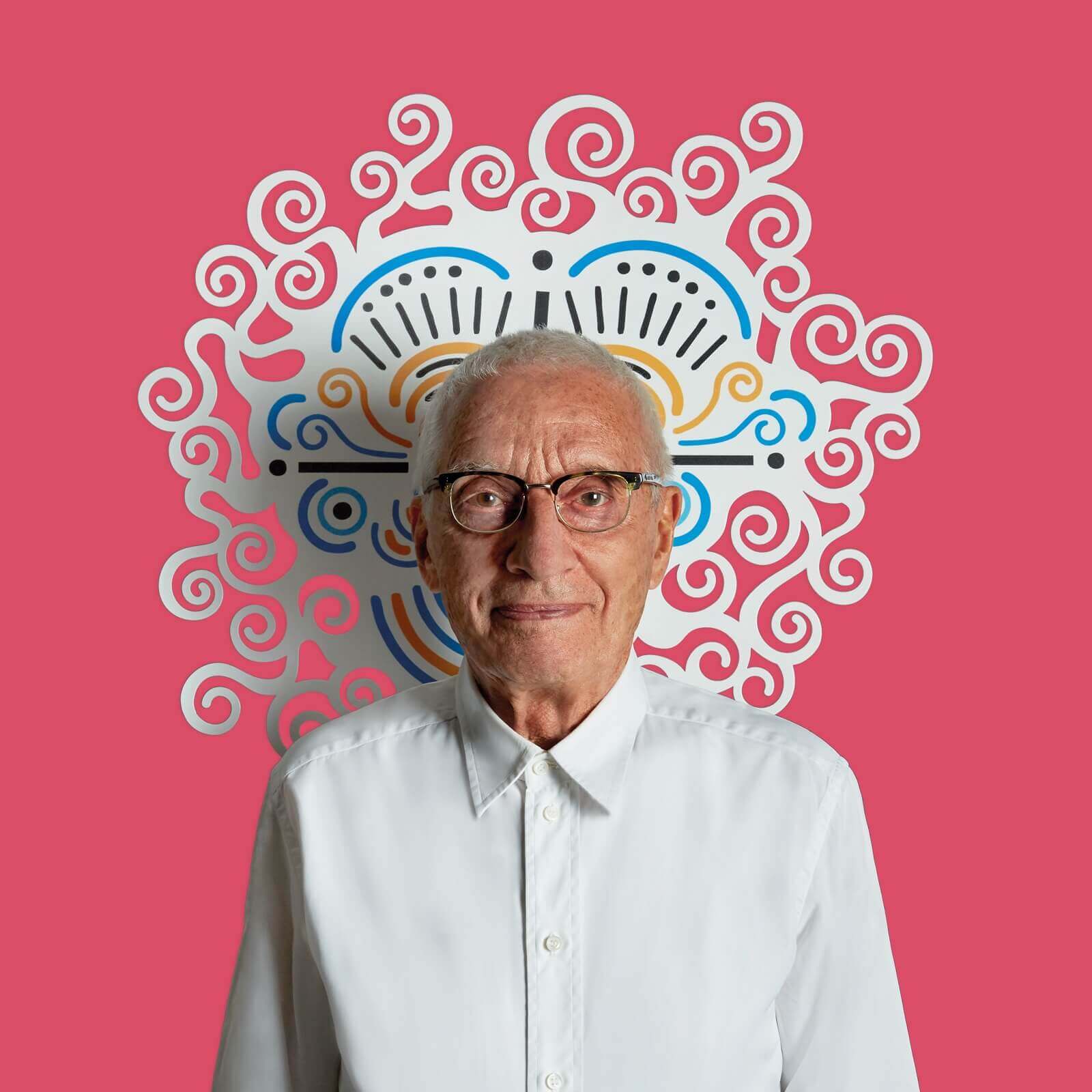
Alessandro Mendini
COURTESY: Alessandro Mendini Archive / Carlo Lavatori
How Mendini came to design the building is partly thanks to the gallerist John Veldkamp, the first to show Italian design in Groningen, introducing Mendini’s work to Frans Haks, the Groninger Museum’s then director. Haks staged an exhibition of Mendini’s work in the museum’s former building and selected him to construct the new one on a site chosen by the city. Although better known as a designer, Mendini was a qualified architect and had co-founded his studio with his architect brother Francesco in Milan in 1989. While Mendini designed the museum’s central golden tower, he enlisted Michele de Lucchi, Philippe Starck and Coop Himmelb(l)au – the latter chosen after Frank Stella dropped out – to each design a pavilion, hence the project’s heterogenous character.
To plan the anniversary exhibition, the Gronginger Museum’s current director Andreas Blühm travelled to Milan to meet Mendini. “He was a very friendly, humble man and felt flattered and honoured,” Blühm recalls. “We were all very worried that he wouldn’t have time to do it, or would pass away beforehand, but he enthusiastically embarked on the project and did little drawings. Within a couple of weeks, we had the first draft concept and a preliminary list of the objects he wanted to include. Almost half a year later, he had designed the whole exhibition, down to the last detail.”
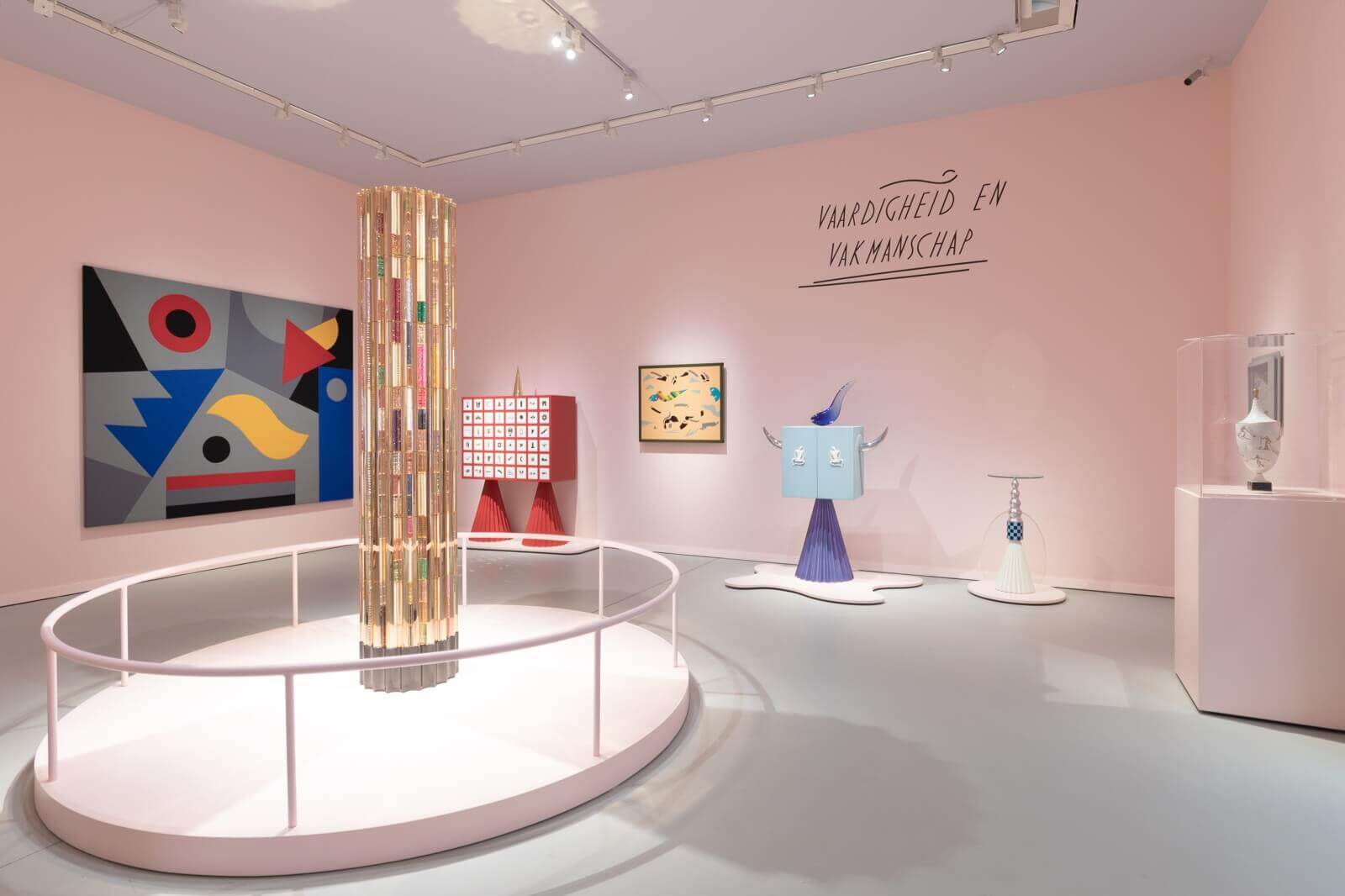
Installation view
COURTESY: Groninger Museum
Mendini had the walls painted pale pink, providing a uniform, pastel backdrop to his multifarious, helter-skelter universe that includes 130 of his own works and 70 by those that inspired him. Paintings by Paul Signac, Wassily Kandinsky, Henri Matisse and Kazimir Malevich intersect with architectural designs by Theo van Doesburg and Gerrit Rietveld and objects by Gio Ponti, De Lucchi and Gaetano Pesce. Mendini has included a plaster copy of Umberto Boccioni’s 1931 sculpture of a striding figure in space, another source of inspiration. Walt Disney’s Mickey Mouse and Pluto rubber figurines feature too, recalling how Mendini initially dreamt of drawing comic-strips.
“The scenography is a typical Mendini mix, which is a sometimes confusing but never boring combination of objects,” Blühm says about the unchronological show that breaks down barriers between good and bad taste. Indeed, Mendini considered his work to be a “continuous system of fragments, a kind of Milky Way of my memory”.
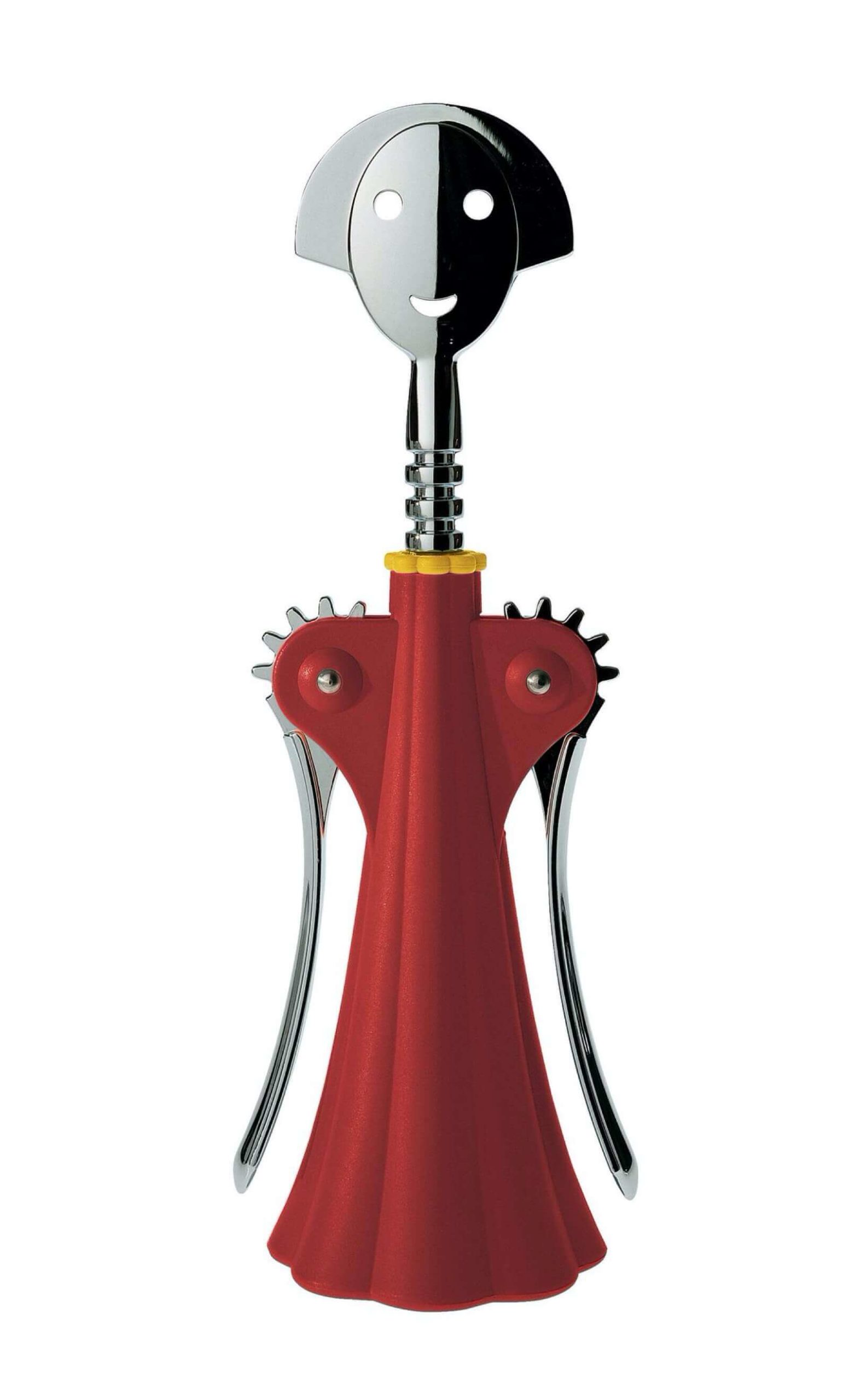
Alessandro Mendini, ‘Anna G.’, 1994, corkscrew for Alessi
COURTESY: Alessi – Alessandro Mendini Archive
The exhibition opens with a bright geometric wallpaper mural by Mendini overlaid with abstract paintings by Peter Halley. This is a restaging of the American artist’s invitation to Mendini to collaborate with him on a show at Mary Boone Gallery in New York in 2013. By setting the tone this way, Mendini wanted to declare his openness to younger generations and his continued relevance in contemporary culture.
Works from various periods intermingle in several rooms. The seminal ‘Poltrona di Proust’ (1978) armchair is presented alongside the gigantic gold mosaic suitcase and coffee cup from the ‘Mobili per Uomo’ (1997-2008) series. The armchair was conceived as a piece of furniture that the French novelist Marcel Proust may have liked to use. Mendini purchased a replica of an eighteenth-century baroque armchair and covered it in fabric on which he hand-painted pointillist dots inspired by a painting by Signac. While the chair is a decorative homage to a bygone era, the pieces of “furniture for man”, made in Bisazza mosaics, are like future relics of mankind.
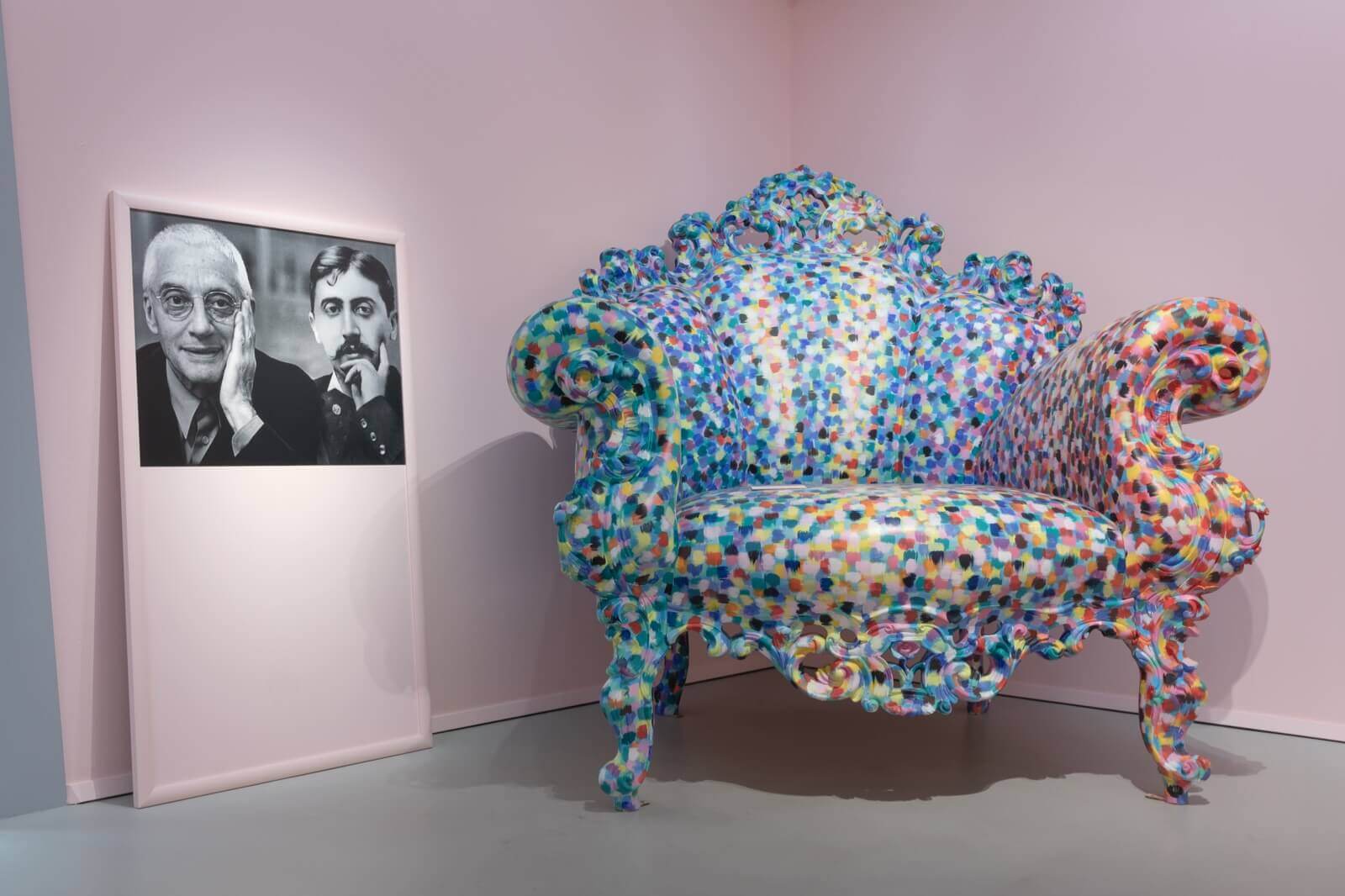
Alessandro Mendini, ‘Poltrona di Proust’, 1978; photomontage by Laura Villani, ‘Alessandro Mendini and Marcel Proust’, 2010
COURTESY: Groninger Museum & Alessandro Mendini Archive, Milan
Elsewhere is another key early piece: the ‘Kandissi Sofa’ (1978). Created for Studio Alchimia, which Mendini was associated with before joining Memphis in the early 1980s, it was inspired by a Biedermeier sofa. Mendini upholstered the sofa in an abstract fabric that he surrounded with brightly painted wooden forms in irregular shapes, an anti-design counterpoint to Modernism’s ‘form follows function’ principle.

Alessandro Mendini, ‘Kandissi Sofa’, 1980
COURTESY: Groninger Museum / PHOTOGRAPH: Heinz Aebi
Mendini also satirised the Bauhaus with his series of “redesign” chairs, such as ‘Redesign: Zig Zag Rietveld’ (1978), a take on Rietveld’s ‘Zig Zag’ chair (1934) but with a cross on the back, ironically making it sacred.

Alessandro Mendini, ‘Redesign: Zig Zag Rietveld’, 1978
COURTESY: Groninger Museum / PHOTOGRAPH: Marten de Leeuw
How Mendini worked across contrasting scales is striking. In the same decade that he created the ‘Petite cathédrale’ (1996-2002) sculpture in Bisazza tiles with a gold face inside, he was developing his relationship with Alessi. In 1992, he asked 98 international artists, architects and designers to decorate a white porcelain vase that he had designed, as well as decorating two himself, for Alessi’s ‘100% Make-Up’. There’s also his well-known Anna G. (1994) corkscrew, inspired by the Italian designer Anna Gili’s oval-shaped face and bobbed haircut, and ‘Giostrina Alessi’ (2000), a musical carousel in which coffee pots, teapots, sugar bowls and corkscrews replace horses on a merry-go-round.
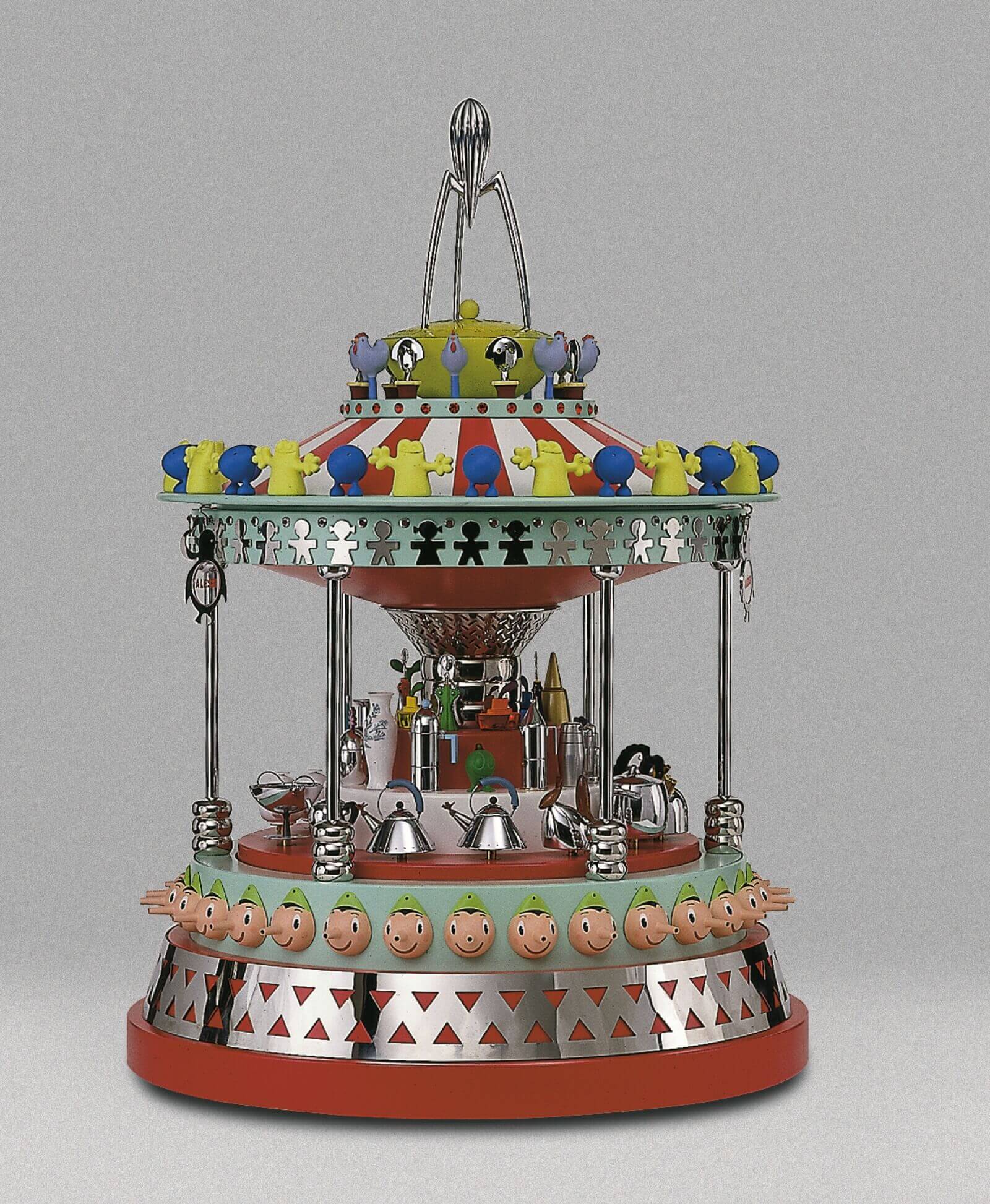
Alessandro Mendini, ‘Giostrina Alessi’ musical carousel, 2000
COURTESY: Museo Alessi, Crusinallo / PHOTOGRAPH: Sergio Ricco
Humour and playfulness underscore Mendini’s creations, whether for Alessi or Cartier. In 2009, the latter invited him to create an artwork with thousands of precious and semi-precious stones, culminating in ‘Colonna di Cartier’ – a gleaming, jewelled, skyscraper-reminiscent column. “Mendini would always play with your expectations,” Blühm says. “A gold mosaic piece looks as if it’s valuable, but maybe it’s not, and the Cartier column looks as if it’s plastic but there are real jewels and gold inside.”
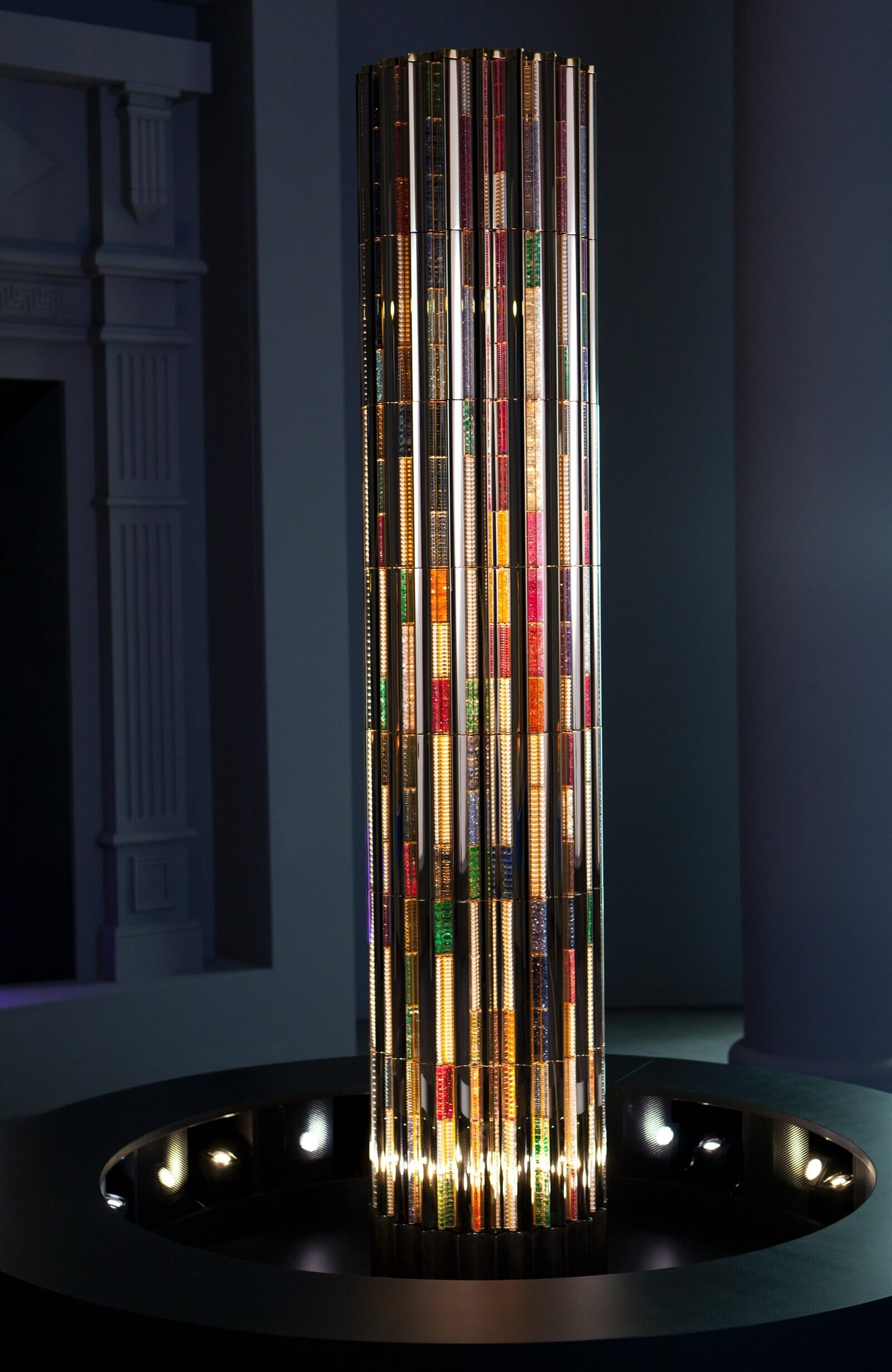
Alessandro Mendini, ‘Colonna di Cartier’, 2009
COURTESY: Cartier, Paris / PHOTOGRAPH: Société Cartier / Alessandro Mendini Archive
The link in Mendini’s mind between life and design is accentuated in the last room where his ‘Lassù’ (1974) minimalist chair on a high pyramidal pedestal is exhibited. Then the editor of Casabella, an Italian design and architecture magazine, Mendini had two such unusable chairs produced. A photograph of one of them burning – an allegorical, performative piece about modernism in flames – was published on the cover of Casabella‘s July 1974 issue. Mendini aimed to show that objects, like people, could have “a life as well as a death”. ‘Lassù’ predated Mendini’s career as a designer, and his later magazine adventures, as founder of Modo magazine (1977-1981) and as editor of Domus from 1980-1985 and in 2010/2011. Yet it is with this piece that Mendini opted to close the exhibition, circling back to the beginning of his legacy.
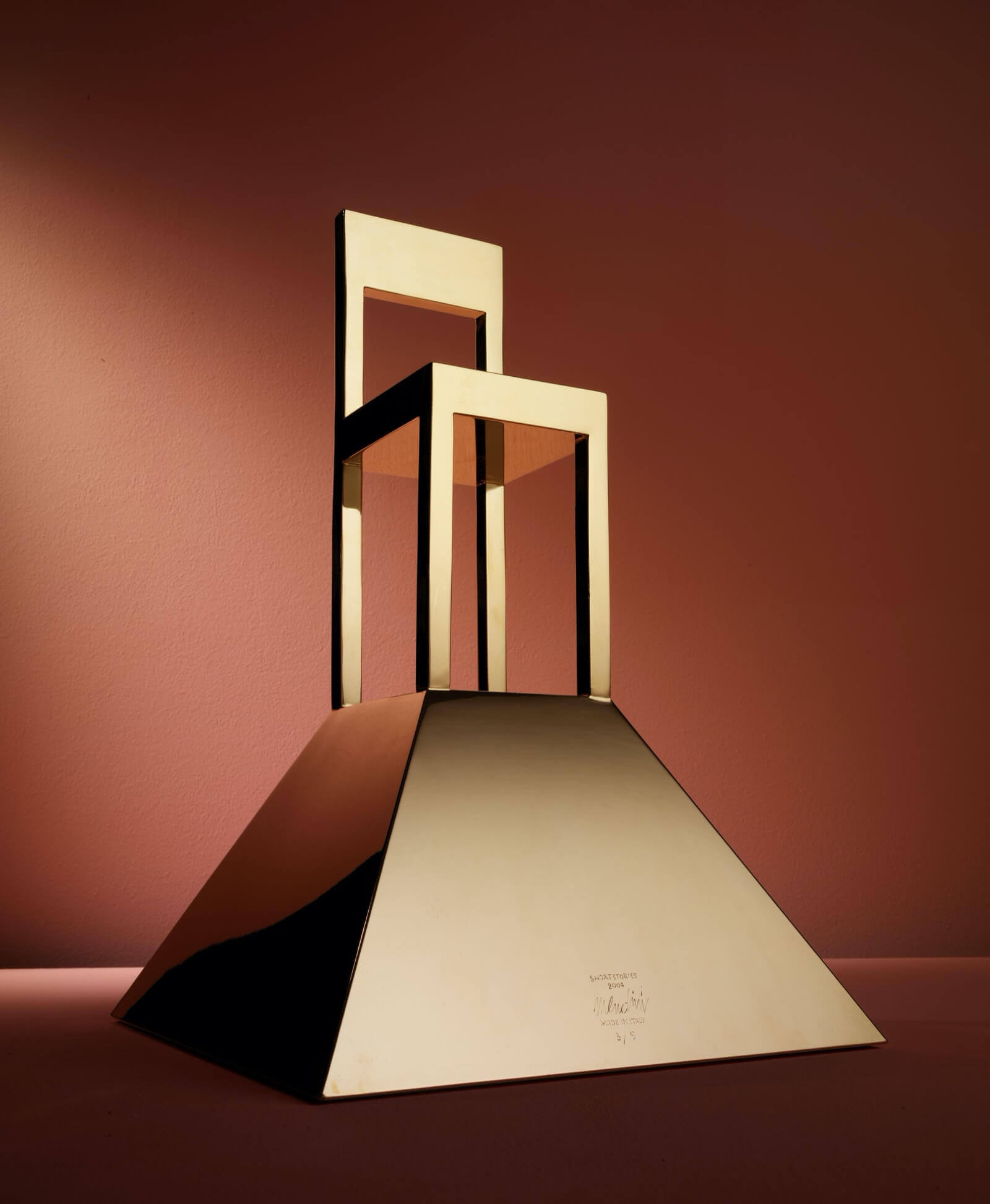
Alessandro Mendini, ‘Lassù’, 1994-2005, produced by Short Stories
PHOTOGRAPH: Riccardo Bianchi
Groninger Museum – exhibits modern and contemporary art of local, national and international artists.




